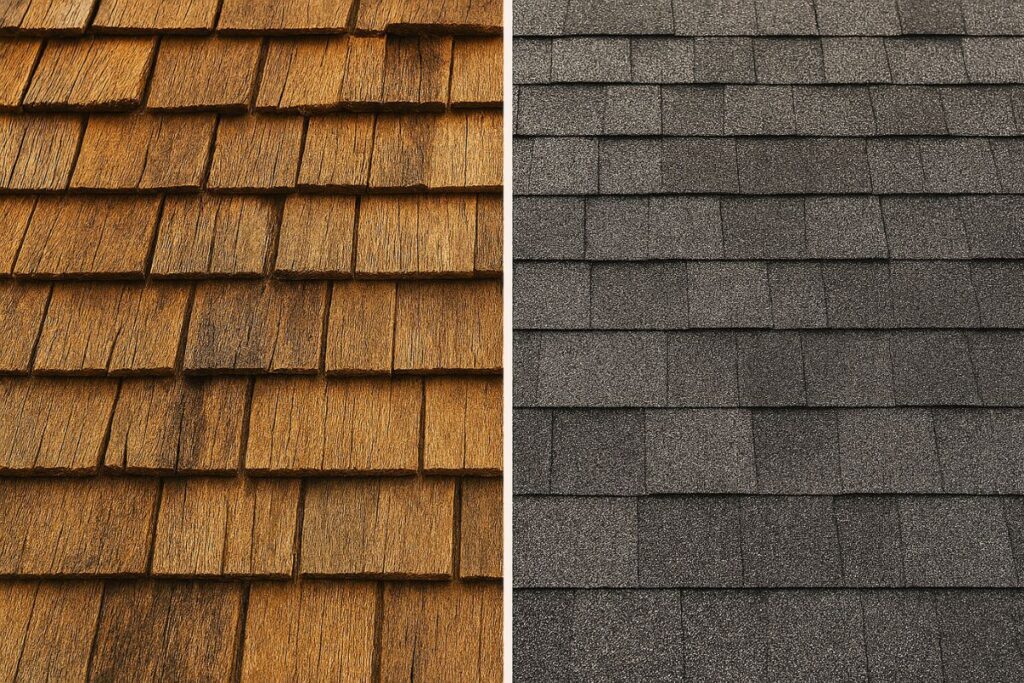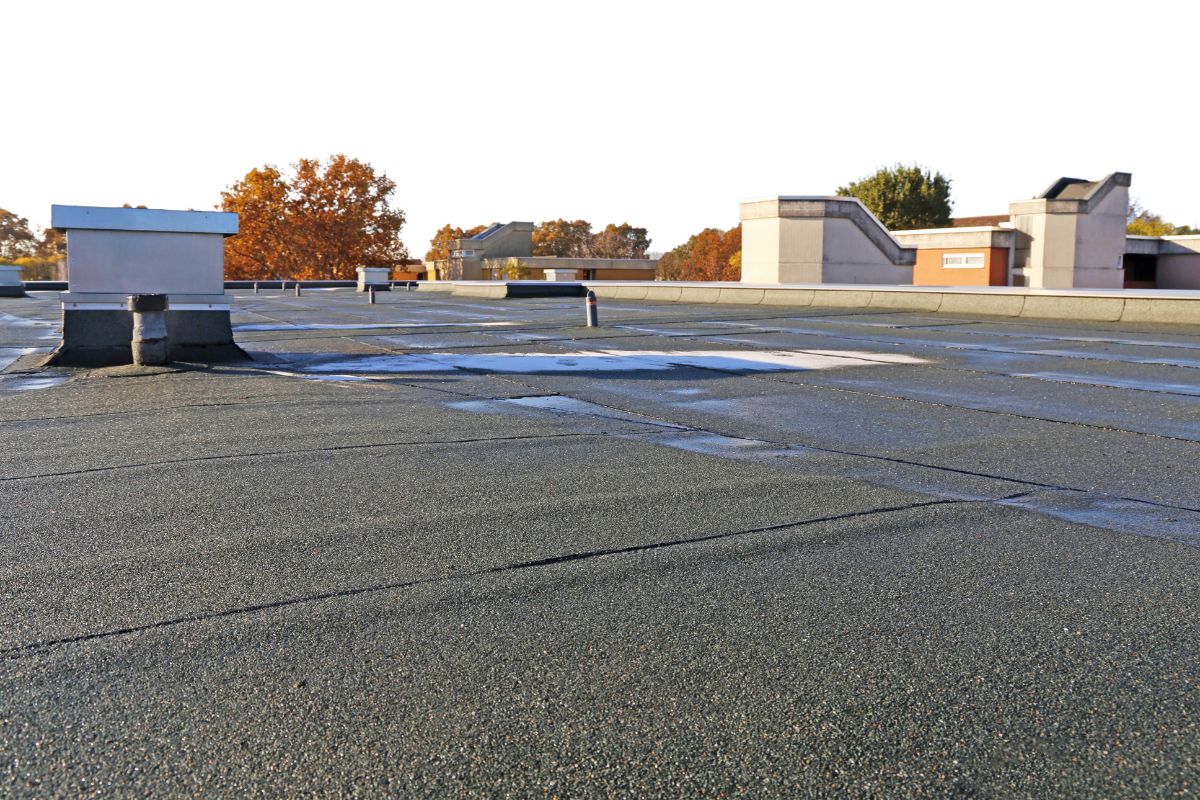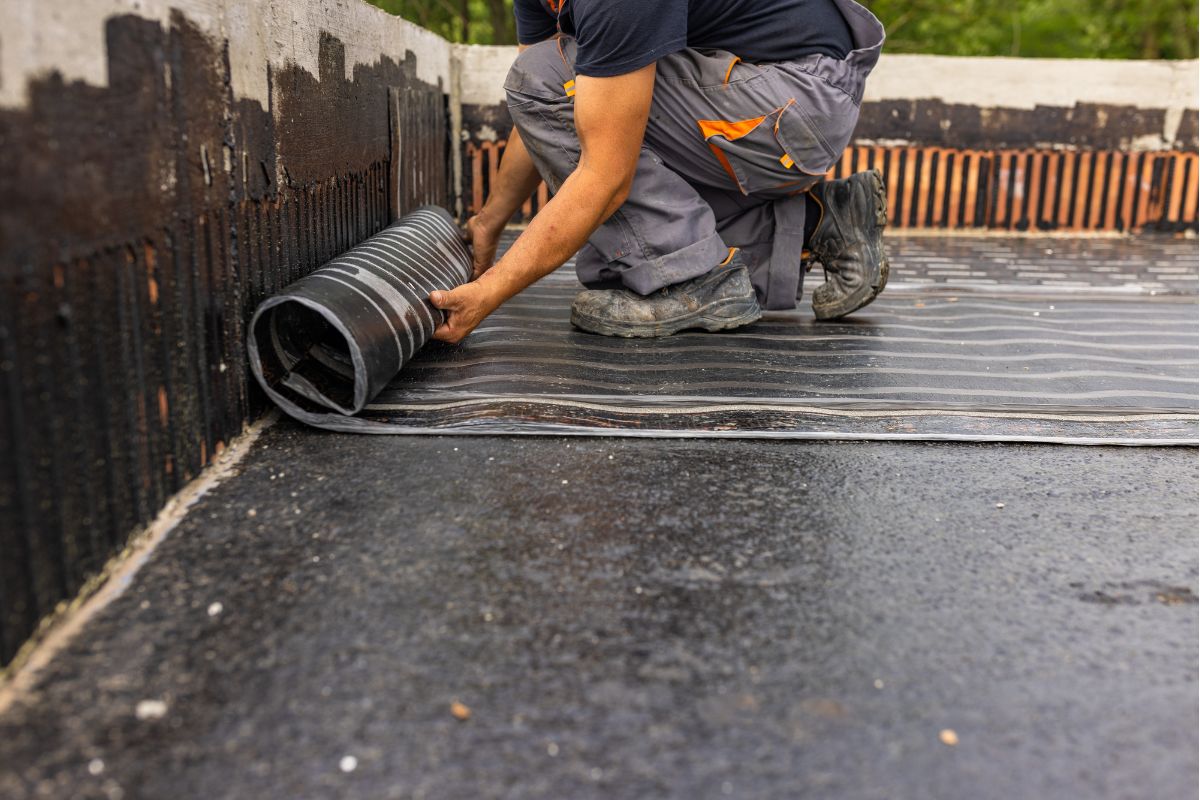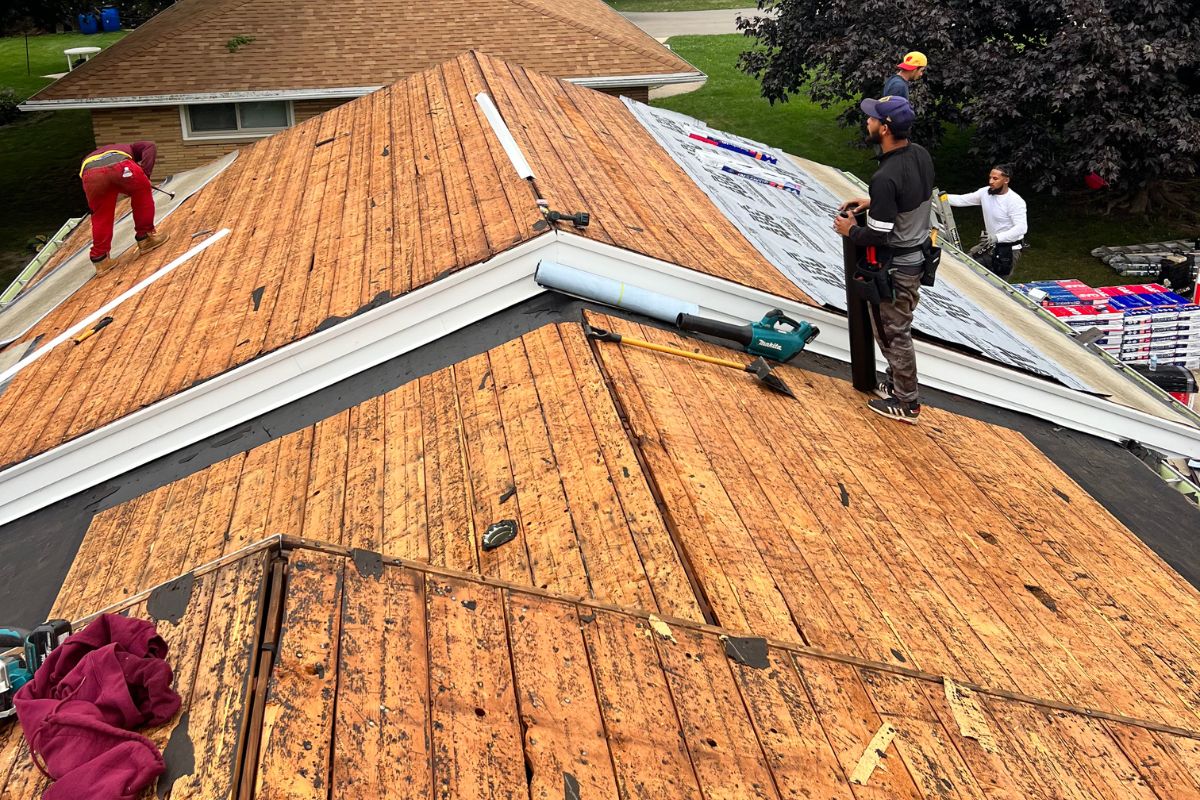Shake roofs offer a rustic charm but come with higher maintenance costs and require natural materials, while shingle roofs are more affordable, low-maintenance, and fire-resistant. Shingles excel in aesthetics and tradition; shingles win in practicality. Synthetic alternatives bridge the gap but come at a premium. Choose based on budget, climate, and long-term upkeep preferences.

What Defines a Traditional Shake Roof?
A shake is a type of roofing made from natural wood, most commonly Western Red Cedar. You’ll also hear terms like cedar shakes, wood shakes, or hand-split shakes. The key thing is, shakes are usually thicker than wood shingles and have a more irregular, rugged look. They’re often hand-split on one side and taper-sawn on the other.
There are three grades:
- Grade 1 (Premium) – 100% edge grain, most durable, longest lasting
- Grade 2 (Select) – Mix of edge and flat grain
- Grade 3 (Common) – Lower quality, more prone to cupping and splitting
Natural wood shakes are beautiful. They’ve got that rustic appearance people want when they’re going for a traditional or even high-end look. Think of those older homes in historic districts or lakefront properties in Wisconsin; many of those use cedar shake roofing for timeless appeal.
What Is a Modern Shingle Roof Made Of?
In contrast, shingle roofs, usually made of asphalt shingles, are the more common choice. They’re machine-made, uniform, and generally cheaper. You’ve seen these on thousands of homes. Three-tab and dimensional shingles (also called architectural shingles) are the standard. Dimensional ones are more common today; they last longer and look better.
Asphalt shingles are built in layers:
- Fiberglass base
- Asphalt coating
- Mineral granules
They’re designed for performance and price. Not aesthetics. But they get the job done, and a good dimensional shingle roof can last 20 to 30 years, no problem. Learn more about asphalt roofing systems and how they’re built for durability.
Durability and Lifespan: Shake Roof vs Shingle Roof
Cedar shakes, when properly maintained, can last 30 to 50 years. But there’s a big asterisk here. Maintenance is key. If you let debris build up or algae grow, expect problems.
Meanwhile, top-tier asphalt shingles can last 20–30 years with very little maintenance. Some synthetic shingles and luxury lines (like Brava shingles) even stretch that to 40+ years.
Verdict: If you’re willing to maintain it, cedar shakes win on lifespan. Otherwise, shingle roofing is easier and more predictable.
Fire Resistance Ratings in Roofing Materials
This is a big one. Wood shakes are naturally flammable. To be code-compliant in many areas, they need to be pressure-treated with fire retardants to achieve a Class A fire rating. Without that, they may only have Class C or no rating at all.
Asphalt shingles usually come with Class A fire resistance out of the box. Some synthetics (like CeDUR Roofing Shakes) offer fire-resistant alternatives with a natural look.
Verdict: Class A fire-rated shingles are the safer bet unless you opt for synthetic cedar.
Impact Resistance Performance Compared
Cedar shakes have decent impact resistance because of their thickness and natural density. But grading matters; edge grain performs better than flat grain.
Many asphalt shingles now come with Class 4 impact resistance, the highest rating available. If you’re in an area with hail, look for this rating.
Verdict: Impact-resistant shingles are ideal for hail-prone regions.
Aesthetic Differences and Visual Appeal
No contest here. Cedar shake roofs give a warm, textured, and traditional look. They age into a silvery-gray patina that many homeowners love.
Shingles have come a long way in terms of looks. Dimensional shingles can mimic slate or wood, and synthetics like Brava Roof Tile offer Brava Cedar Shake tiles that look like hand-split wood.
But real cedar is still king in terms of rustic beauty. Explore our roofing gallery to see how each style transforms a home.
Cost Comparison Between Shake and Shingle Roofing
Let’s talk about money. Cedar shake roofs cost a lot more. Not just for materials, but for labor too. They require a specific installation method. You’ll also need felt paper interlays between layers for proper weatherproofing. This adds time and cost.
Asphalt shingles are cheaper. Installation is faster. Less specialized labor is needed. The total installed cost of a shingle roof can be 40–60% less than a cedar shake roof.
Use our roofing cost calculator to estimate your budget based on materials and square footage.
Maintenance Demands of Each Roof Type
Wood roofs need regular inspections. You’ve got to clean off moss, inspect for rot, and maybe even apply a preservative. And don’t ignore attic ventilation, that’s crucial for shake roofs to breathe and dry out.
Shingle roofs? Not as much. Maybe a check-up every couple of years. Keep the gutters clear. That’s about it.
Verdict: Roof maintenance is simpler with shingles.
Are Synthetic Cedar Shake Alternatives Worth It?
There’s a middle path here. Synthetic cedar shakes like CeDUR, Brava, and Enviroshake offer the rustic look of wood without the downsides. They’re made from polyurethane materials, often include UV stabilizers, and are resistant to rot, fire, and insects. Most come with Class A fire ratings and Class 4 impact resistance.
The trade-off? Cost. These can be even more expensive than real cedar. But if your priority is appearance and performance, they’re worth considering. Learn more about premium roofing options that blend beauty and durability.
Environmental Impact and Building Code Compliance
Real cedar shakes are a natural building material, but that doesn’t always mean eco-friendly. Harvesting and manufacturing have environmental costs. Plus, they’re not recyclable.
Asphalt shingles aren’t great either, though some recycling programs exist. Synthetic shingles are more durable and sometimes made from recycled content.
In wildfire-prone zones, building codes may prohibit untreated wood roofs. So always check local regulations. For help navigating local codes, visit our Wisconsin roofing services.
Roofing Warranties: What to Expect
Most asphalt shingles come with a 30- to 50-year limited warranty. Brands like GAF, CertainTeed, and Owens Corning offer warranties that include labor and material, even transferable to the next homeowner.
Cedar shakes? Manufacturers don’t really “warranty” natural wood products in the same way. Installers might offer limited guarantees, but you’re on your own if the wood splits or curls.
Synthetics? Many come with a 50-Year Lifetime Limited Warranty, sometimes covering both materials and color fading. For trusted brands, check out our roofing partners.
Practical Advice from a Roofing Professional
If you want rustic beauty, can handle maintenance, and don’t mind the price, go with cedar shakes. They’ve got character, curb appeal, and a tradition that’s hard to beat.
On the other hand, if you want something dependable, budget-friendly, and easy to take care of, go with shingles. Especially if you’re in a region with rough winters and hail.
And if you want a hybrid of looks and performance? Look into synthetic cedar shake products like Brava or CeDUR.
Just don’t go into a roofing project blind. Talk to your contractor. Get multiple bids. Ask about grading rules, attic ventilation, and the installation method. The right roof isn’t just about looks; it’s about longevity, safety, and peace of mind.
If you’re in Wisconsin and need real answers, reach out to us at Northern Generations Roofing. We’ve been doing this for over 30 years. We are located at 6326 W Bluemound Rd, Wauwatosa, WI 53213, United States.








